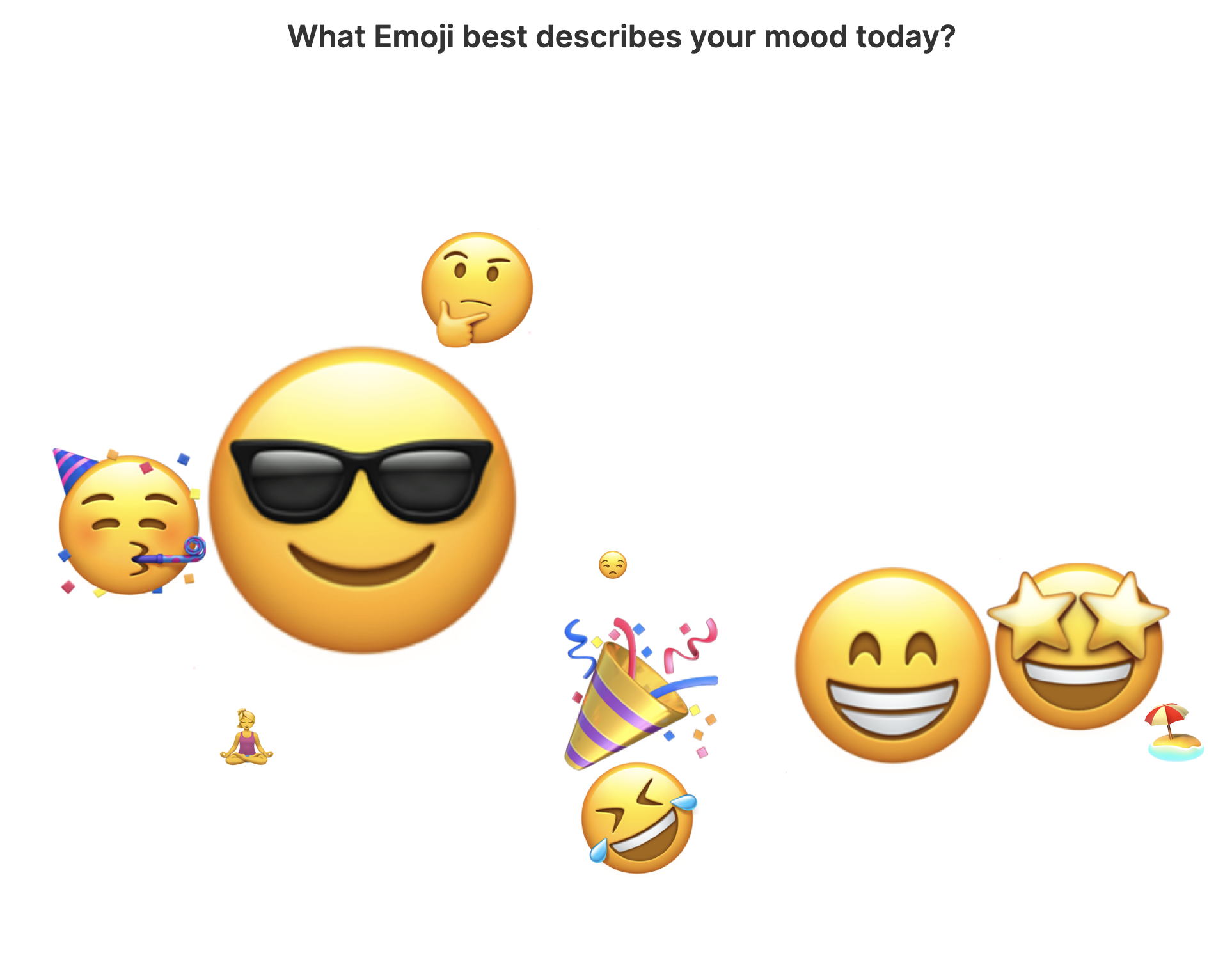
Word Clouds have transformed the way we conduct meetings, fostering creativity, collaboration, and connection. Whether you’re in a corporate environment, educational setting, or creative workshop, Word Clouds offer engaging and visually appealing methods to interact with participants. Here’s a rundown of 50 ways you can utilize Word Clouds in your meetings:
Icebreakers & Engagement (10 Ideas)
- Location Cloud: Ask where participants are joining from.
- First Impressions: Collect initial thoughts on a presented topic.
- Emoji Reactions: Let attendees express their current mood through emojis.
- Favorite Hobbies: Share personal interests to find common ground.
- One-word Expectations: Gauge what participants hope to get from the meeting.
- Bucket List Destinations: Share dream travel destinations.
- Personal Strengths Cloud: Encourage sharing of individual strengths.
- Current Reads: Share favorite books or current reads.
- Work-from-home Challenges: Connect over shared remote work experiences.
- Virtual Coffee Preferences: Lighten the mood by discussing favorite coffee or tea.
Brainstorming & Creativity (10 Ideas)
- Theme Exploration: Gather related words around a central theme.
- Product Ideas: Collect product-related suggestions or improvements.
- Content Strategy: Build content themes for marketing.
- Problem Solving: Gather potential solutions to a common problem.
- Event Planning: Generate ideas for upcoming events.
- Brand Associations: Explore what participants associate with a brand.
- Character Traits: Brainstorm traits for character development (great for writers).
- Visualize Goals: Gather and visualize team or personal goals.
- Customer Feedback: Capture what customers love about a product.
- Project Barriers: Identify and discuss potential obstacles in a project.
Feedback & Evaluation (10 Ideas)
- Meeting Effectiveness: Summarize main takeaways after a meeting.
- Course Feedback: Collect student thoughts on a specific course.
- Product Evaluation: Gather initial impressions of a product demo.
- Speaker Impressions: Collect feedback on guest speakers.
- Event Recap: Summarize key moments from an event or conference.
- Performance Review Insights: Encourage anonymous feedback on performance.
- Service Experience: Evaluate customer service experiences.
- Training Session Feedback: Collect thoughts on professional training sessions.
- Website Impressions: Gather feedback on website design or usability.
- Workshop Evaluation: Summarize what participants learned from a workshop.
Team Building & Culture (10 Ideas)
- Strengths & Passions Cloud: Showcase individual team strengths.
- Team Values: Define and visualize shared team values.
- Conflict Resolution: Identify common ground during conflicts.
- Virtual Team Building: Connect remote team members through shared interests.
- Cultural Diversity: Celebrate diverse backgrounds within a team.
- Team Milestones: Highlight and celebrate team achievements.
- Shared Vision: Build a word cloud that represents the team’s shared vision.
- Success Stories: Share and visualize success stories within the team.
- Collaborative Goals Setting: Encourage team members to set shared goals.
- Celebrating Failures: Reflect on failures as learning opportunities.
Education & Learning (10 Ideas)
- Subject Exploration: Visualize key concepts in a subject.
- Student Introductions: Allow students to introduce themselves.
- Literature Themes: Explore themes within a literary work.
- Historical Events Cloud: Summarize key events in history.
- Science Concepts: Visualize complex scientific ideas.
- Language Learning: Encourage language associations for learners.
- Math Concepts Visualization: Make math engaging through word associations.
- Art Appreciation: Explore different art movements or styles.
- Social Studies Connections: Connect historical events and figures.
- Educational Goals: Allow students to share their learning goals.
Conclusion
Word Clouds offer endless opportunities to enrich your meetings, facilitate communication, and encourage active participation. Whether breaking the ice, fostering creativity, gathering valuable feedback, building a strong team culture, or enhancing educational experiences, the power of Word Clouds is waiting to be explored.
Consider implementing these ideas in your next meeting, and experience the vibrant and interactive world of Word Clouds. Your participants will thank you for a more engaging, insightful, and memorable experience!
